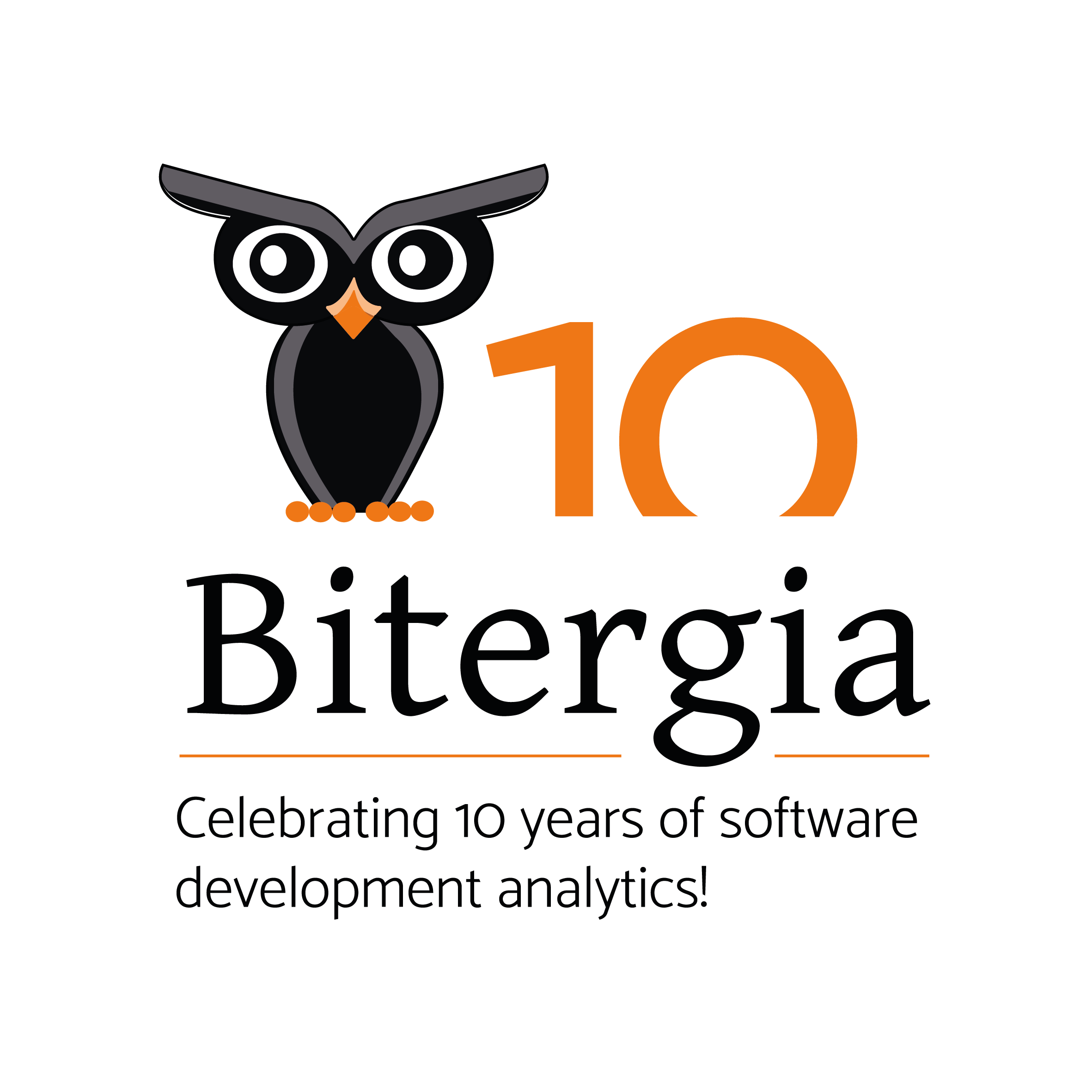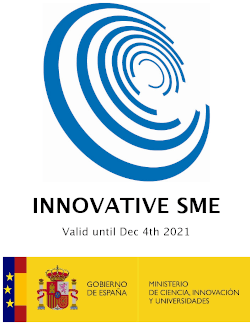The LF AI Foundation hosts and supports open source projects within the artificial intelligence, machine learning, and deep learning space. This post shows how the different LF AI projects software development activity evolved over time and the impact that The Linux Foundation brought to them.
LF AI Foundation ecosystem
Here you can see the list of projects that become member of the LF AI Foundation. There are two kinds of projects: Graduated Projects and Incubation Projects. Most of them are still in an early incubation stage.
The oldest projects have been under The Linux Foundation umbrella since 2018, that’s just three years ago.
TL AI Foundation projects from 2018
Let’s analyze those projects that joined during 2018:
- Acumos (graduated on 2019)
- Angel
- Elastic Deep Learning
- Horovod
The timeframe of our analysis is from January 2017 to June 2020. To see the overall activity evolution, the dashboard below shows 4 main metrics:
Commits over time: It’s interesting to see that in 2018, code activity (measured by commit activity on git) slightly increased within this projects, that corresponds to the year they joined TL AI as incubators. The commit activity level was higher after joining the LF AI Foundation.
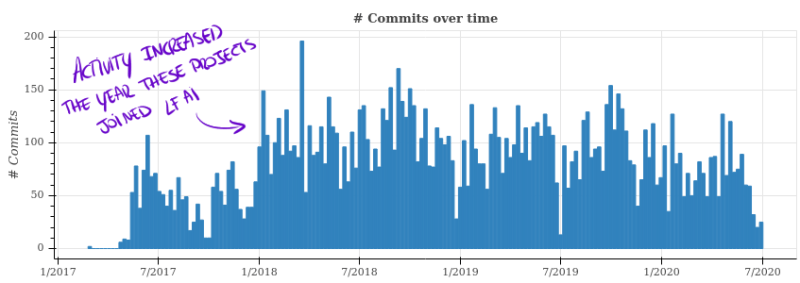
Authors segment over time: It seems to be an uptick of authors, reviews, and commit activity in 2018 that sustains until 2020 COVID-19 hit.
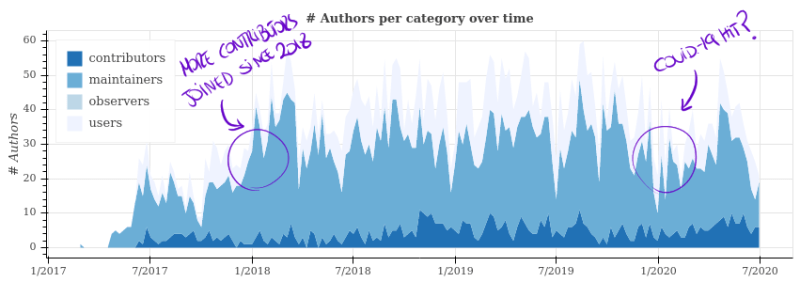
Open/ Closed Issues and Reviews: Code reviews (pull requests or merge request activity) showed an increase since august 2018. Moreover, created issues slightly increased too in same year.
This slideshow requires JavaScript.
TL AI Foundation projects from 2019
Let’s move to the projects that joined during 2019:
- Pyro
- Adlik
- ONNX
- SParklyr
- Marquez
The timeframe of our analysis is from January 2018 to June 2020.
Commits over time: Although during Q1 and Q2 of 2019 commit activity remained stable and at some point, showed some decreased, later at Q3 and Q4 started to increase commit activity until today. Where the contributors busy while joining the LF AI Foundation and distracted from contributing? The commit level after joining the LF AI Foundation is higher than before.
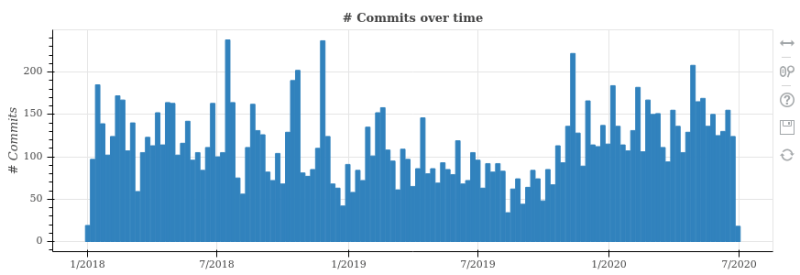
Authors segment over time: Authors slightly increased on 2020. Here we can highlight the improved balance between author segments (contributors, maintainers, and observers) compared to 2018 projects, which had mainly maintainers.
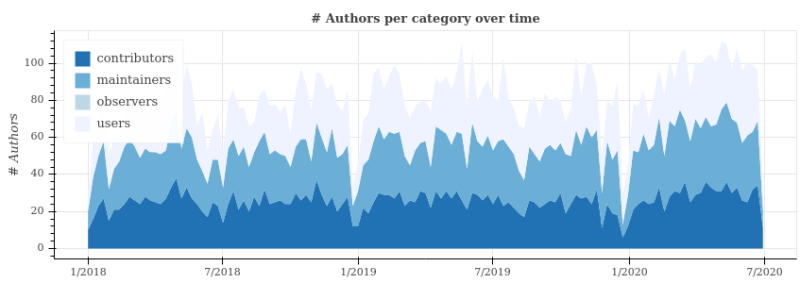
Open/Closed Issues and Reviews: We can see some picks during 2019 but nothing special at open/closed issues. However, something we can highlight is the review activity showed during first half of 2018. What happened during those months? Were the maintainers preparing the project to join the LF AI Foundation?
This slideshow requires JavaScript.
TL AI Foundation projects from 2020
Finally let’s take a look to the latest additions to the LF AI ecosystem:
- Milvus
- NNstreamer
- ForestFlow
Timeframe of our analysis is from January 2019 to June 2020:
Commits over time: There seems to be an uptick in 2019. Was this in preparation for onboarding to the LF AI Foundation?
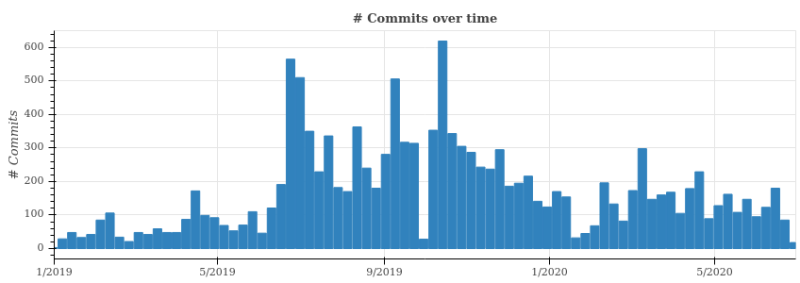
Authors segment over time: Author activity considerably increased at the end of 1019 and showed a clear valley during the whole month of february and march. The valley is also visible in the review and issue activity (we will see this later). Can this be influenced by covid-19 countermeasures?
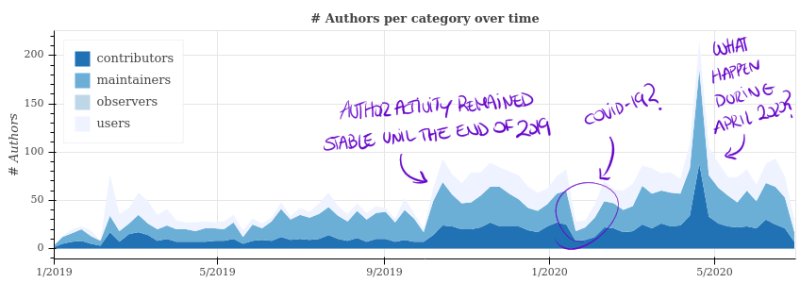
Open/ Closed Issues and Reviews: Issues open and closed clearly changed at the end of 2019. Is that from the visibility that comes with being an LF AI Foundation project?
This slideshow requires JavaScript.
LF AI Foundation project activity in a nutshell
To sum up, we can see how these projects increased or decreased their activity year-over-year.
2020 projects
- Commit activity increased +180%
- Issues created increased +100%
- Reviews (PRs/MRs) created increased +260%
2019 projects
- Commit activity increased +14.9%
- Issues created decreased -1.25%
- Reviews (PRs/MRs) created increased +0.18%
2018 projects
- Commit activity decreased -18%
- Issues created decreased -21%
- Reviews (PRs/MRs) created increased +0.96%
How to run your own analysis
Disclaimer: “Correlation does not imply causation”. We don’t have the domain knowledge LF AI Foundation project maintainers and community specialists have. We only report the numbers and can raise questions.
Data was gathered and visualized using Cauldron.io, a free metrics SaaS solution built on top of the open source GrimoireLab project, that allows project managers, analysts, and developers to analyze software development projects. We invite any expert involved in any of the LF AI projects to analyze the project they are involved in, and discover new insights that we might be missing.
Cauldron.io has a community to ask for support and find more documentation about how to get started.
What other open source project would you like us to analyze? Please leave your answer below!





